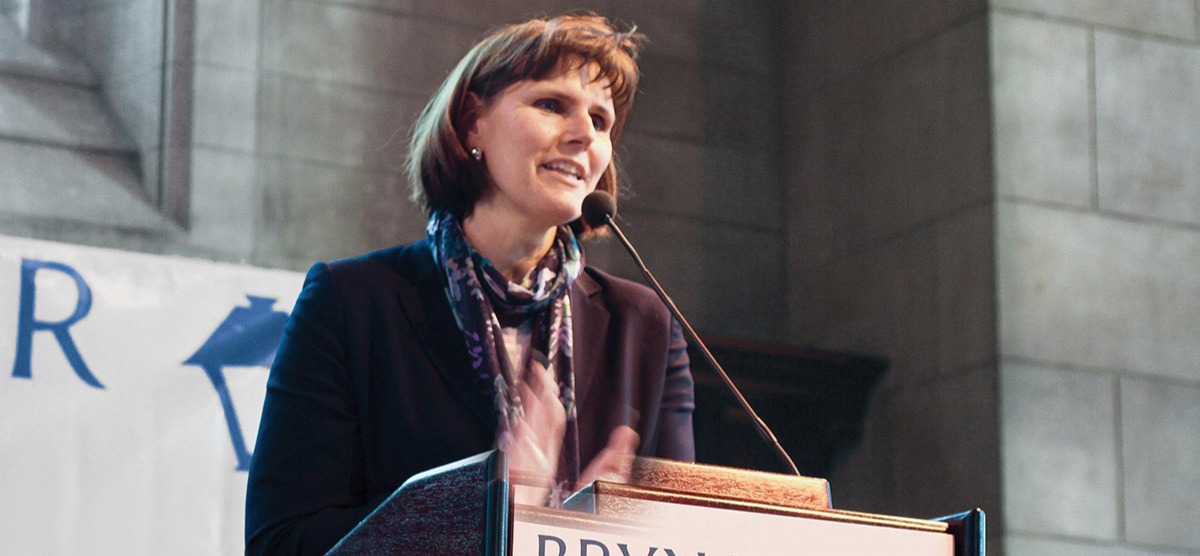
Creating COVID-19 Classrooms
None of us would have chosen a pandemic to spark creativity in teaching.
Dear Friends:
How does Bryn Mawr, aspiring to nurture intellectual curiosity and to educate students to the highest standard of excellence, carry out this mission in the midst of a pandemic? The summer of 2020 was one in which our faculty wrestled with this challenge. During months ordinarily devoted to research, many faculty spent significant time exploring new options for course design and developing strategies to create intellectual community for students who are spread across continents. More than two-thirds of the faculty attended weeklong workshops that offered new approaches for teaching virtually or in hybrid settings; others rethought in-person classes that would require masks and physical distance. I want to share a few examples of the creative fall 2020 classes and “classrooms” that emerged.
Jonas Goldsmith and Susan White have completely rethought the organization of General Chemistry. Lectures are virtual and “synchronous” (in real time) for all students, whether at Bryn Mawr or remote. “Notability,” a software that works as a chalkboard, allows faculty to save lecture notes along with the lecture audio, and students can experience the lecture again (and see the notes re-appear as the lecture proceeds!). The faculty have also added recitation sections of no more than eight students each to create cohorts and a sense of community (especially important for those studying remotely); senior chemistry majors who serve as TAs offer a second optional recitation. For on-campus students, labs alternate between in-person and remote to keep numbers in the room small; there is a fully virtual lab section for students studying remotely. Finally, the faculty created a different testing strategy to dial down some of the stress that we know students are experiencing.
Some faculty have found that their courses could function well in the “new normal” with a few strategic adaptations. Since all of the students in two upper-level Greek classes that Radcliffe Edmonds is teaching are in residence, his major adaptation has been to move class outside to the Moon Bench at the foot of Senior Row for better air circulation (weather permitting). However, for a Greek history class with remote and in-person students, Rad worked with Multimedia Services to set up multiple computers in his classroom so that all students can simultaneously see one another and the slides he shares from his laptop. He, too, uses small group breakouts to ensure that firstyear students form connections.
I can hardly imagine a greater challenge to teaching acting than masks and physical distancing, but Catherine Slusar of the theater program describes the necessity of restructuring her courses as “a gift” for her and her students. Half of class meetings take place on Zoom, which offers powerful face-to face contact, one-on-one work in breakout rooms, and the opportunity to watch plays together. Other classes take place outside, where students are exploring movement and setting in new ways (e.g., staging scenes in the landscape means physical distancing can be justified in their acting). Catherine believes in-person sessions have been crucial to student well-being— and have also meant that her Shakespeare class had the opportunity to look at the First Folio in Special Collections and to think about how this version of the text, written by actors, tells us something different than later scholarly editions.
None of us would have chosen a pandemic to spark creativity in teaching. While much has changed, faculty have worked tirelessly to preserve our core value of nurturing our students’ love of learning, and I for one am impressed and proud.
Sincerely,
Kim Cassidy, President
Published on: 11/24/2020
